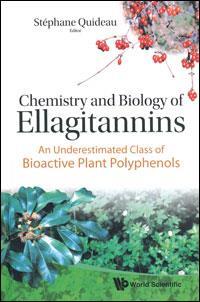Chemistry and biology of ellagitannins: an underestimated class of bioactive plant polyphenols
Chemistry and biology of ellagitannins: an underestimated class of bioactive plant polyphenols
St?phane Quideau (ed)
London, UK: World Scientific Books 2009 | 396pp | ?71.00 (HB)
ISBN 9789812797407
Reviewed by Olivier Dangles

Ellagitannins are a fascinating class of widely distributed natural products with original structural characteristics, among which are chiral biaryl linkages connecting two gallic acid units, chiral rings stemming from oxidative dearomatisation of gallic acid moieties, an open D-glucose chain, linear or macrocyclic oligomers with biarylether linkages, and C-glycosidic linkages with flavanols and anthocyanins.
Unlike gallotannins, ellagitannins are chemically stable and isolable compounds. Moreover, the connection between adjacent galloyl groups increases the rigidity of the overall structure which may result in a scaffold of chemical functionalities (aromatic nuclei, hydroxyl and keto groups) with well-defined spatial distribution for specific interactions with biological receptors. Consistently, ellagitannins are the active components of many medicinal plants.
This book reviews the huge structural diversity of ellagitannins and their biological and pharmacological activities and describes recent advances in ellagitannin biosynthesis, such as the discovery of plant enzymes that catalyse the stereoselective oxidative coupling of two galloyl moieties.
The two main strategies for the total synthesis of ellagitannins, depending on whether the oxidative coupling between the galloyl moieties takes place before or after installation on the D-glucose core, are discussed. Ellagitannins have been used as lead compounds in the search for new anticancer or antiseptic agents acting through modulation of the immune system.
Because of their presence in fruits (berries) and nuts, investigating the bioavailability and metabolism of ellagitannins after oral ingestion has nutritional significance: ellagitannins are largely hydrolysed into ellagic acid in the gastrointestinal tract.
The final chapter deals with C-glycosidic ellagitannins and, in particular, describes the original reactivity of those compounds which can act as non-conventional benzylic carbocation precursors and stereospecifically react with a variety of natural nucleophiles (thiols, alcohols, phenols). The relevance of this original reactivity in the chemistry of oak-aged red wine is discussed.
In conclusion, this comprehensive and well-illustrated book, which gathers contributions from leading teams in the chemistry and biology of ellagitannins, deserves a wide success.












No comments yet